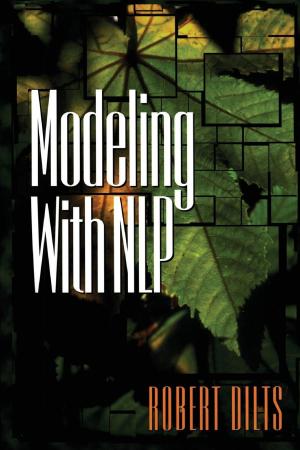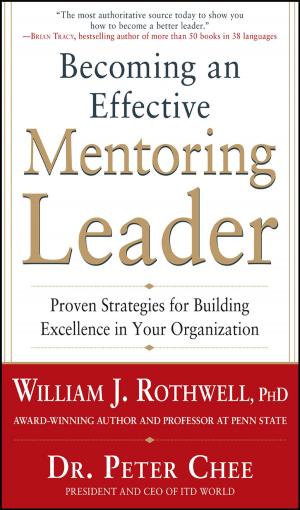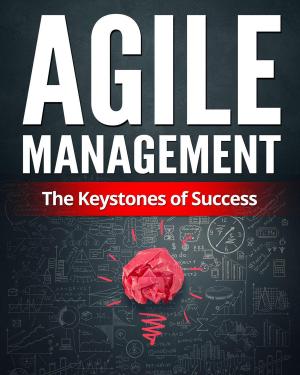Coach Anyone About Anything: How to Help People in Business and Life
Nonfiction, Health & Well Being, Self Help, Self Improvement, Success, Business & Finance, Management & Leadership| Author: | Germaine Porche | ISBN: | 9780982660423 |
| Publisher: | Germaine Porche | Publication: | July 23, 2014 |
| Imprint: | Smashwords Edition | Language: | English |
| Author: | Germaine Porche |
| ISBN: | 9780982660423 |
| Publisher: | Germaine Porche |
| Publication: | July 23, 2014 |
| Imprint: | Smashwords Edition |
| Language: | English |
Among Amazon's Best 100 Business Books of 2003, this easy-to-read guidebook shows readers how to motivate, manage and empower others to meet their business or personal goals. Everyone can be a coach to help others. Everyone can experience improvement in life through the help of a caring, resourceful and focused coach. Coaching is simple, it’s effective, and it’s applicable to a dozen areas of life.
This book is written for you with practical information, whether you’re coaching an individual, a business team, or a volunteer group. It’s written for professional coaches and for parents.
In this book, you’ll get proven methods to boost your skills as a coach. We’re going to share with you tools, exercises, and processes that we’ve invented to help you accomplish your coaching objectives and dreams. After finishing this book, you’ll come away with the most complete coaching toolkit available today.
Included in the book is A Coaching Architecture, a one-year timeline marking the important steps, phases, and junctures appropriate to most coaching scenarios. It’s at the end of this introduction along with a description of each part. It also references the book’s chapter(s) for more in-depth information.
You’ll also find at the end of this book the Coaching Tools & Models Index, naming 56 valuable coaching tools and techniques described in this book. The Coaching Tools & Models Index is a valuable tool in itself. Have you ever wondered how coaching differs from management or leadership? We’ve discovered that most businesspeople can’t articulate the difference. In this book, you’ll gain a clear and powerful understanding of the differences between coaching, management, and leadership so you can know when to coach, manage, or lead. Most executives and managers don’t know. Some teachers, corporate leaders, and volunteers find the lines too fuzzy, and this book gives specific help. Parents are walking that coaching, management, and leadership road and wondering if they’re even going the right direction. This book’s information-dense text helps parents, too.
In our final chapter, Patience and Power, we examine power itself and how it applies to the privilege of coaching. Then we tie the book together by illustrating uses for all the coaching tools we’ve given you in this single chapter.
The Coaching Inventory is both a self-assessment and a learning tool. It is designed to review, and in some instances, introduce 55 key coaching principles, structures, practices, and approaches. It allows you to assess your coaching ability.
Whether you’re coaching a work team or your child’s soccer team, the techniques we share in this book will improve your effectiveness. Regardless of your experience level as a coach, the keys we share with you will unlock your natural coaching ability.
Maybe coaching is new to you or you haven’t thought of its importance before. Are you aware that we’ve all coached at one time or another? Have you helped a colleague figure out a tricky problem? Have you been involved in a community project or a fundraising event? Have you worked with or headed a team in the office?
If you’ve been coached at one time in your life—and trust us, you have, although you may not have called it that—you already have a handle about what works and what might not be effective.
May we coach you?
May we help you become a better coach to assist anyone to succeed at anything?
If you want to be a more successful leader, supporter, and team member, your answer will be yes.
This book is the result of our professional work as consultants/coaches. It’s also part of our personal involvement on volunteer, community, and educational projects.
This book is written for everyone. It’s for the executive in the boardroom, the parent coaching a teenager, the entrepreneur motivating clients, the corporate trainer, the human resource professional, the little league coach, and the friend who lends an ear.
Among Amazon's Best 100 Business Books of 2003, this easy-to-read guidebook shows readers how to motivate, manage and empower others to meet their business or personal goals. Everyone can be a coach to help others. Everyone can experience improvement in life through the help of a caring, resourceful and focused coach. Coaching is simple, it’s effective, and it’s applicable to a dozen areas of life.
This book is written for you with practical information, whether you’re coaching an individual, a business team, or a volunteer group. It’s written for professional coaches and for parents.
In this book, you’ll get proven methods to boost your skills as a coach. We’re going to share with you tools, exercises, and processes that we’ve invented to help you accomplish your coaching objectives and dreams. After finishing this book, you’ll come away with the most complete coaching toolkit available today.
Included in the book is A Coaching Architecture, a one-year timeline marking the important steps, phases, and junctures appropriate to most coaching scenarios. It’s at the end of this introduction along with a description of each part. It also references the book’s chapter(s) for more in-depth information.
You’ll also find at the end of this book the Coaching Tools & Models Index, naming 56 valuable coaching tools and techniques described in this book. The Coaching Tools & Models Index is a valuable tool in itself. Have you ever wondered how coaching differs from management or leadership? We’ve discovered that most businesspeople can’t articulate the difference. In this book, you’ll gain a clear and powerful understanding of the differences between coaching, management, and leadership so you can know when to coach, manage, or lead. Most executives and managers don’t know. Some teachers, corporate leaders, and volunteers find the lines too fuzzy, and this book gives specific help. Parents are walking that coaching, management, and leadership road and wondering if they’re even going the right direction. This book’s information-dense text helps parents, too.
In our final chapter, Patience and Power, we examine power itself and how it applies to the privilege of coaching. Then we tie the book together by illustrating uses for all the coaching tools we’ve given you in this single chapter.
The Coaching Inventory is both a self-assessment and a learning tool. It is designed to review, and in some instances, introduce 55 key coaching principles, structures, practices, and approaches. It allows you to assess your coaching ability.
Whether you’re coaching a work team or your child’s soccer team, the techniques we share in this book will improve your effectiveness. Regardless of your experience level as a coach, the keys we share with you will unlock your natural coaching ability.
Maybe coaching is new to you or you haven’t thought of its importance before. Are you aware that we’ve all coached at one time or another? Have you helped a colleague figure out a tricky problem? Have you been involved in a community project or a fundraising event? Have you worked with or headed a team in the office?
If you’ve been coached at one time in your life—and trust us, you have, although you may not have called it that—you already have a handle about what works and what might not be effective.
May we coach you?
May we help you become a better coach to assist anyone to succeed at anything?
If you want to be a more successful leader, supporter, and team member, your answer will be yes.
This book is the result of our professional work as consultants/coaches. It’s also part of our personal involvement on volunteer, community, and educational projects.
This book is written for everyone. It’s for the executive in the boardroom, the parent coaching a teenager, the entrepreneur motivating clients, the corporate trainer, the human resource professional, the little league coach, and the friend who lends an ear.















